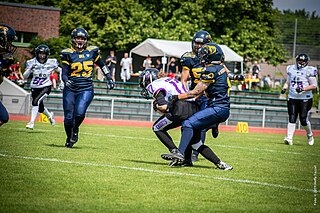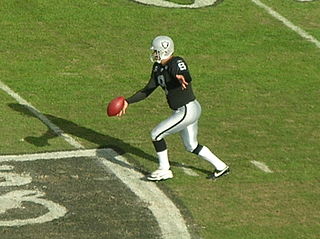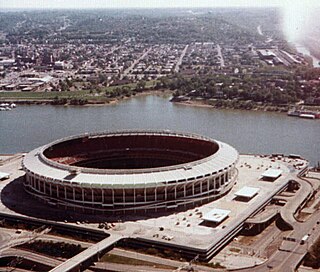This article needs additional citations for verification .(November 2012) |

Electric Football is a tabletop American football game played on a metal vibrating field.
This article needs additional citations for verification .(November 2012) |

Electric Football is a tabletop American football game played on a metal vibrating field.

In 1948, Norman Sas succeeded his father, Elmer Sas, as president of Tudor Metal Products Corporation and invented Tudor Electric Football. [1]
Norman Sas based the game on a vibrating car race game made by Tudor. The early #500 Electric Football models were the first tabletop football game which featured actual moving players as they reacted to the vibrations created by the electromagnet motor under the metal field. Passing and kicking was another unique feature of its design.
Electric Football was an immediate success and maintained popularity throughout the 1960s and 1970s. Tudor has sold 70 million Electric Football games to date. This commercial success led other toy companies to develop similar games.
Tudor produced the first all-plastic 3D players, and in the 1960s, an industrial designer named Lee Payne showed Norman Sas a more realistic set of player prototypes. Tudor introduced these players on its first large game, the #600 model. Besides figures in five different poses, Payne sold them on the idea of painting the figures using actual NFL uniform colors. He was instrumental in working with the creative services department of the NFL to obtain the license for marketing the NFL uniformed teams.
Payne began working directly for Tudor Games as head of Product Development. He created new designs with more realistic fields, crowd backgrounds, and scoreboards. Payne used a softer plastic material to develop a new player piece, the Triple Threat Quarterback, that could run, pass, and kick. In 1967 Tudor introduced its new flagship Model 620, which implemented a metal playing surface, cardboard backdrop scoreboard, NFL-style goal posts and NFL painted teams. The Model 620 set the standard for Electric Football. Tudor later introduced the Total Team Control (TTC) player base with a directional dial that allowed for finer route control and all new capabilities. In 1990, Tudor was sold to Miggle Toys.
In February of 2012, Doug Strohm became president and CEO of Tudor Games. Under Strohm's leadership, Tudor re-established the NFL license, created new figures and fields and officially added products created by Electric Football hobbyists.
There are local, regional, national and international Electric Football leagues and tournaments that culminate in a World Championship tournament and convention.

The game is played on a metal field, which can range in size from 24 inches long by 13 inches wide up to 61 inches long by 27.5 inches wide. Detailed, plastic players on bases, which react to the vibration of the field, are placed on the field in formations, just as in real football. When the formations are completed by the offensive coach and the defensive coach, audibles in the form of pivots or motions are made in order to try to gain an advantage. A switch is activated that turns on an electric or battery powered counterbalanced motor which causes the field to vibrate and the players to move around the field.

As mentioned, each player is attached to a base, with "prongs" or "brushes", also known as "cleats", on the underneath of the base. These prongs can be "coached" prior to the playing of the game by using smooth mouthed pliers which stretch, shape and or flatten the prongs to get them to perform faster, stronger and in an exact route. The base in combination with a specific action figure can then be put in an on field position in the offense or defense that best makes use of the combined attributes.
Special players are used to pass, kick or punt the ball. The ball is a small slit oval piece of felt, rubberized foam or leather. The throwing Quarterback has an extended arm which the ball is placed on. The arm or the entire man can be bent backwards in order to flick the football off the arm to the intended receiver. If the ball touches the receiver figure or its base, it is considered a complete catch. Use of the throwing Quarterback is a difficult skill to master and requires practice to develop. Special players are also used for kicking and punting and have spring legs which when pulled back and released, kick or punt the ball. The original iconic quarterback that comes with the game is capable of passing and kicking and is known as the Triple Threat QB or TTQ.
In 2016, an app called Electric Football Challenge was created. The app serves as a digital scoreboard with configurable timers matching the flow of real football. The app can be enabled to do the passing and kicking in place of the traditional Triple Threat QB/Kicker. It also has a playbook containing over 45 plays and a rules section for the game.

The quarterback (QB) is a position in gridiron football who are members of the offensive side of the ball and mostly line up directly behind the offensive line. In modern American football, the quarterback is usually considered the leader of the offense, and is often responsible for calling the play in the huddle. The quarterback also touches the ball on almost every offensive play, and is almost always the offensive player that throws forward passes. When the QB is tackled behind the line of scrimmage, it is called a sack. The position is also colloquially known as the "signal caller" and "field general".

A touchdown is a scoring play in gridiron football. Scoring a touchdown grants the team that scored it 6 points. Whether running, passing, returning a kickoff or punt, or recovering a turnover, a team scores a touchdown by advancing the football into the opponent's end zone. More specifically, a touchdown is when a player is in possession of the ball, any part of the ball is in the end zone they are attacking, and the player is not down.

A down is a period in which a play transpires in gridiron football. The down is a distinguishing characteristic of the game compared to other codes of football but is synonymous with the 6 "tackle" rule in rugby league. The team in possession of the football has a limited number of downs to advance ten yards or more towards their opponent's goal line. If they fail to advance that far, possession of the ball is turned over to the other team. In most situations if a team reaches their final down, they will punt to their opponent, which forces their opponent to begin their drive from further down the field; if they are in range, they might instead attempt to score a field goal.

In American football, the placekicker (PK), or simply kicker (K), is the player who is responsible for the kicking duties of field goals and extra points. In most cases, the placekicker also serves as the team's kickoff specialist and occasionally in youth football, also acts as the punter.

American and Canadian football are gridiron codes of football that are very similar; both have their origins partly in rugby football, but some key differences exist between the two codes.
Strategy plays a crucial role in American football. Both teams carefully plan various aspects of their gameplay in an effort to win. This includes deciding on formations, selecting players for specific positions, and assigning roles and instructions to each player on offense and defense.

Gameplay in American football consists of a series of downs, individual plays of short duration, outside of which the ball is or is not in play. These can be plays from scrimmage – passes, runs, punts or field goal attempts – or free kicks such as kickoffs and fair catch kicks. Substitutions can be made between downs, which allows for a great deal of specialization as coaches choose the players best suited for each particular situation. During a play, each team should have no more than 11 players on the field, and each of them has specific tasks assigned for that specific play.

A punter (P) in gridiron football is a special teams player who receives the snapped ball directly from the line of scrimmage and then punts (kicks) the football to the opposing team so as to limit any field position advantage. This generally happens on a fourth down in American football and a third down in Canadian football. Punters may also occasionally take part in fake punts in those same situations, when they throw or run the football instead of punting.

4th and 26 was a National Football League (NFL) game played on January 11, 2004, between the Green Bay Packers and Philadelphia Eagles during the 2003–04 playoffs. The Packers travelled to Lincoln Financial Field in Philadelphia, Pennsylvania, for a divisional playoff game after beating the Seattle Seahawks in a wild card game the week prior. After taking an early 14–0 lead, the Packers allowed the Eagles to tie the game in the fourth quarter, 14–14. After the Packers regained the lead on a late field goal, the Eagles got the ball with only a few minutes left to tie or take the lead. After a penalty and a sack pushed the Eagles back 16 yards, they faced a fourth down with 26 yards to go with just 1:12 left on the game clock. Eagles' quarterback Donovan McNabb completed a 28-yard pass to wide receiver Freddie Mitchell for a first down. The Eagles continued their drive with a field goal to send the game into overtime. After the Eagles intercepted Packers' quarterback Brett Favre, kicker David Akers kicked a game-winning field goal to advance the Eagles to the NFC Championship Game, which they would lose 14–3 to the Carolina Panthers.
The 1958 NFL Championship Game was the 26th NFL championship game, played on December 28 at Yankee Stadium in New York City. It was the first NFL playoff game to be decided in sudden death overtime. The Baltimore Colts defeated the New York Giants 23–17 in what soon became widely known as "the Greatest Game Ever Played". Its legendary status in the pantheon of historic NFL games was again confirmed by a nationwide poll of 66 media members in 2019, who voted it the best game in the league's first 100 years.

In gridiron football, the holder is the player who receives the snap from the long snapper during field goal or extra point attempts made by the placekicker. The holder is set on one knee seven yards behind the line-of-scrimmage. Before the play begins, the holder places the hand which is closest to the placekicker on the ground in a location designated by the kicker's foot, with their forward hand ready to receive the snap. After receiving the snap, the holder will place the football on the turf, or block, ideally with the laces facing the uprights and the ball accurately placed where the backhand was initially, then balancing the ball with one or two fingers until the ball is kicked.

In National Football League (NFL) lore, the Freezer Bowl was the 1981 AFC Championship Game between the San Diego Chargers and the Cincinnati Bengals. The game was played on January 10, 1982, at Cincinnati's Riverfront Stadium, and televised by NBC, with announcers Dick Enberg and Merlin Olsen. The game, won by the Bengals, 27–7, was played in the coldest temperature in NFL history in terms of wind chill. Air temperature was −9 °F (−23 °C), but the wind chill, factoring in a sustained wind of 27 miles per hour (43 km/h), was reported as −59 °F (−51 °C) under the calculation method then in use.

In American football, the specific role that a player takes on the field is referred to as their "position". Under the modern rules of American football, both teams are allowed 11 players on the field at one time and have "unlimited free substitutions", meaning that they may change any number of players during any "dead ball" situation. This has resulted in the development of three task-specific "platoons" of players within any single team: the offense, the defense, and "special teams". Within these three separate "platoons", various positions exist depending on the jobs that the players are doing.

A comparison of American football and rugby union is possible because of the games' shared origins, despite their dissimilarities.
The A-11 offense is an offensive scheme that has been used in some levels of amateur American football. In this offense, a loophole in the rules governing kicking formations is used to disguise which offensive players would be eligible to receive a pass for any given play. It was designed by Kurt Bryan and Steve Humphries of Piedmont High School in California.
The following terms are used in American football, both conventional and indoor. Some of these terms are also in use in Canadian football; for a list of terms unique to that code, see Glossary of Canadian football.

American football, referred to simply as football in the United States and Canada and also known as gridiron football, is a team sport played by two teams of eleven players on a rectangular field with goalposts at each end. The offense, the team with possession of the oval-shaped football, attempts to advance down the field by running with the ball or throwing it, while the defense, the team without possession of the ball, aims to stop the offense's advance and to take control of the ball for themselves. The offense must advance at least ten yards in four downs or plays; if they fail, they turn over the football to the defense, but if they succeed, they are given a new set of four downs to continue the drive. Points are scored primarily by advancing the ball into the opposing team's end zone for a touchdown or kicking the ball through the opponent's goalposts for a field goal. The team with the most points at the end of the game wins.
Field goal range is the part of the field in American football where there is a good chance that a field goal attempt will be successful.
Norman Anders Sas was an American toy inventor, mechanical engineer and manufacturer who is best known for inventing electric football, a tabletop game popular from the late 1940s until the development of video football games in the 1980s.